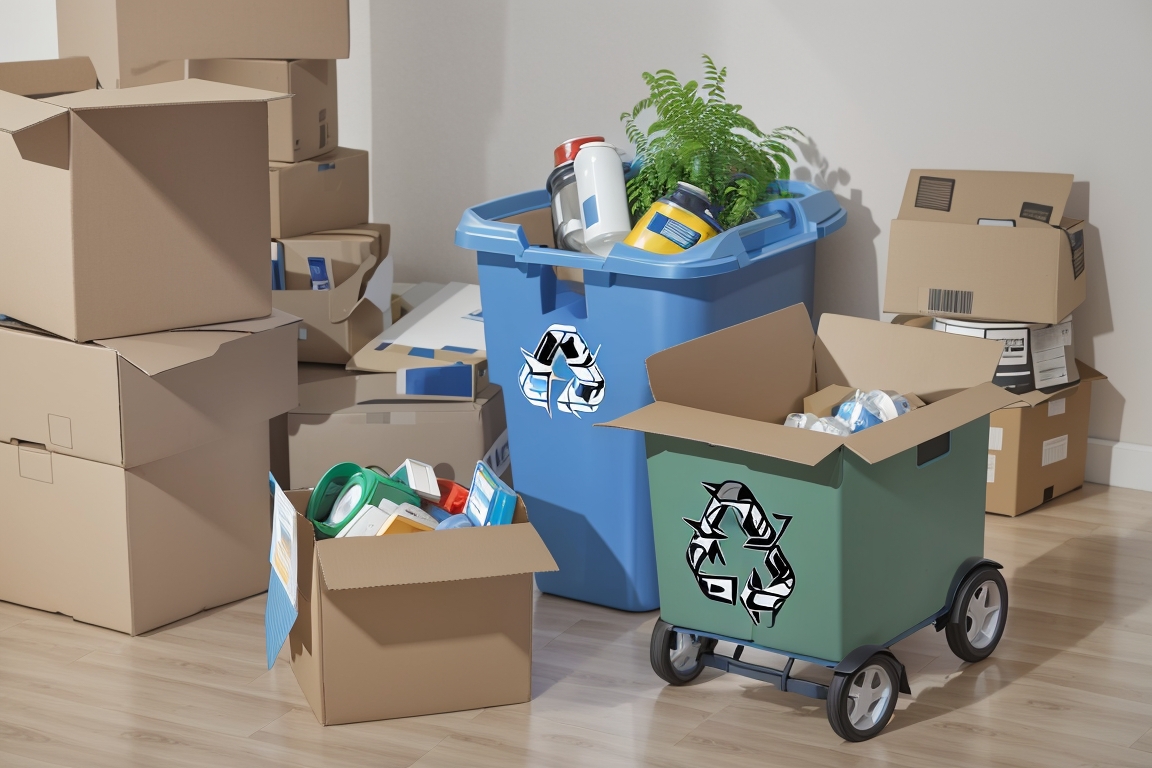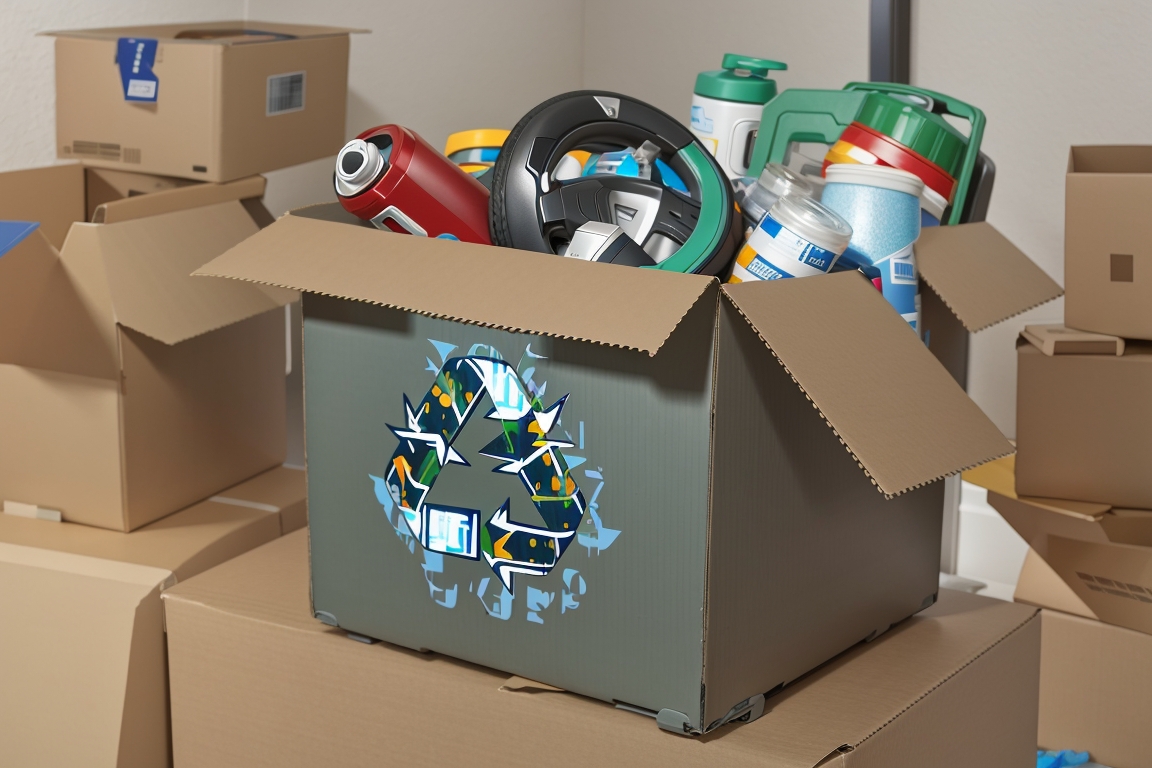Eco-Friendly Moving: Tips for a Sustainable and Environmentally Conscious Relocation
Transitioning to a new home brings about a new chapter, but it’s crucial to be mindful of its potential impact on the environment. The entire process, from packaging materials to transportation, can contribute to waste generation and carbon emissions. However, by embracing eco-friendly practices, you have the power to reduce your ecological footprint and make your transition more sustainable.

Reduce, Reuse, Recycle – The Three R’s of Eco-Friendly Moving
The concept of “Reduce, Reuse, Recycle” is at the core of sustainable living. By applying these principles to your move, you can significantly reduce waste and minimize the environmental impact of your relocation.
The first step in reducing waste during your move is to declutter your belongings. Before packing, go through each room and assess which items you truly need and use. Donate or sell items in good condition that you no longer require, and responsibly dispose of items that are beyond use. By downsizing your belongings, you’ll reduce the number of items that need to be packed and transported, ultimately minimizing waste. Decluttering not only benefits the environment but also simplifies your move. With fewer items to pack, you’ll save time, money, and energy during the packing process. Plus, donating usable items to charitable organizations can make a positive impact on your community.
Instead of purchasing new packing materials, consider using secondhand or reusable alternatives. Visit local stores, online marketplaces, or community groups for gently used cardboard boxes. You can also ask friends, family, or local businesses for boxes that they no longer need. Reusing boxes not only reduces waste but also saves money. Additionally, instead of buying bubble wrap, use clothing, towels, or blankets as padding for fragile items. Not only does this eliminate the need for single-use bubble wrap, but it also helps you pack more efficiently by using items you already have.
Reusable packing materials not only reduce waste but also lower your moving costs. By opting for secondhand boxes and padding materials, you’ll not only save money but also decrease the demand for new resources used to manufacture disposable packing materials.
For items that cannot be donated or reused, make sure to dispose of them responsibly. Look for local recycling centers or facilities that accept items like electronics, appliances, and other recyclables. Some organizations even offer e-waste recycling services for electronics. Recycling is a critical step in reducing the environmental impact of your move. By diverting recyclable items from landfills, you ensure that valuable resources are reused to create new products, reducing the need for virgin materials.
For items that cannot be recycled through traditional means, explore specialized recycling programs or services in your area. Responsible disposal ensures that these items do not end up in landfills, where they can harm the environment.
Eco-Friendly Packing Practices
Packing is a significant part of the moving process, and it presents various opportunities to adopt eco-friendly practices. By choosing sustainable packing materials and techniques, you can make a positive impact on the environment.
Opt for biodegradable packing materials whenever possible. Instead of traditional plastic packing tape, choose biodegradable or compostable tape made from materials like natural rubber or plant-based adhesives. These tapes break down more easily in the environment, reducing their long-term impact.
Similarly, consider using biodegradable packing peanuts made from cornstarch or other renewable materials. These peanuts dissolve in water and are compostable, making them a sustainable alternative to traditional Styrofoam peanuts.
Wrap fragile items in eco-friendly materials to protect them during transit. Instead of using plastic bubble wrap, choose biodegradable bubble wrap made from recycled materials or opt for bubble wrap alternatives like corrugated bubble wrap or paper cushioning.
For more delicate items like glassware and ceramics, use recycled paper or newspapers as wrapping material. Be sure to remove any plastic packaging or plastic wrap from new items before packing them.
Consider investing in reusable and sustainable packing solutions. For instance, reusable plastic bins or eco-friendly moving boxes made from recycled materials can be used multiple times for future moves or as storage containers in your new home. Some companies offer rental services for eco-friendly packing materials, providing you with the necessary items for your move without the need for single-use products.
Reusable packing solutions not only reduce waste but also save resources in the long run. By using durable and sustainable containers, you minimize the need for disposable materials and contribute to a circular economy.
Choose Eco-Friendly Transportation Options
Transportation is a major source of carbon emissions during a move. By selecting eco-friendly transportation options, you can significantly reduce the environmental impact of your relocation.
Plan your move strategically to minimize the number of trips needed for transportation. If you’re hiring a moving company, inquire about consolidation services, where your belongings are combined with those of other customers on the same route. Consolidated moves help optimize space in the moving truck and reduce the overall carbon footprint of the move. Consolidating trips not only reduces emissions but also saves time and money. By coordinating with other moving parties, you make the most efficient use of transportation resources.
If you’re renting a moving truck or van, inquire about hybrid or electric options available from rental companies. Hybrid or electric vehicles produce fewer emissions than traditional gasoline-powered ones, making them a greener choice for your move.
For long-distance moves, consider using rail or sea transport for a more eco-friendly option. Rail and sea transport generally have lower carbon emissions compared to long-haul trucking.
Responsible Disposal at Your New Home
Once you’ve arrived at your new home, it’s essential to continue practicing eco-friendly habits, including responsible disposal.
As you unpack, collect the packing materials for recycling. Flatten and set aside cardboard boxes for recycling, and store packing paper or bubble wrap in a designated area for future use or recycling.
After unpacking, ensure that you dispose of any moving waste responsibly. Separate recyclables from non-recyclables and properly dispose of any hazardous materials, such as batteries or cleaning chemicals. Many cities offer specialized waste disposal services for hazardous items, so be sure to research local guidelines and facilities.
Transitioning to eco-friendly practices in your new home is an integral part of an environmentally conscious move. Implement energy-efficient habits, such as using LED light bulbs, reducing water consumption, and properly insulating your home.
Consider installing a programmable thermostat to optimize heating and cooling based on your schedule, reducing energy usage and lowering utility bills. Additionally, choose ENERGY STAR certified appliances, which are designed to be more energy-efficient and environmentally friendly.
Composting is an eco-friendly way to manage organic waste, such as fruit and vegetable scraps, coffee grounds, and yard trimmings. If your new home has outdoor space, consider setting up a composting system. Composting converts organic waste into nutrient-rich soil, which can be used to enrich your garden or outdoor plants.
Involve the Community in Sustainable Moving
Moving is an opportunity to inspire others in your community to adopt eco-friendly practices. Share your eco-friendly moving experience with friends, family, and neighbors. Discuss the benefits of reducing waste, reusing packing materials, and choosing sustainable transportation options.
Consider organizing a community workshop or virtual event to share eco-friendly moving tips and strategies with others. Collaborate with local environmental organizations or green initiatives to amplify the message.
Encourage your neighbors to participate in a recycling drive to collect used cardboard boxes, packing materials, and other recyclables after their move. Coordinate with local recycling centers or waste management facilities for proper disposal of collected materials.
A neighborhood recycling drive fosters a sense of community and promotes sustainable practices among residents. It also helps divert recyclable materials from landfills and supports recycling efforts in the community.
Other posts
© 2024 Local Movers. All rights reserved.
